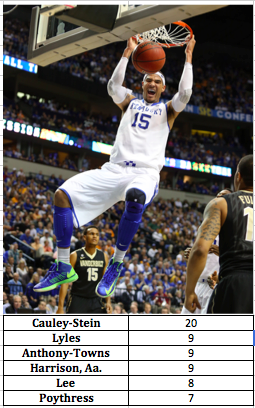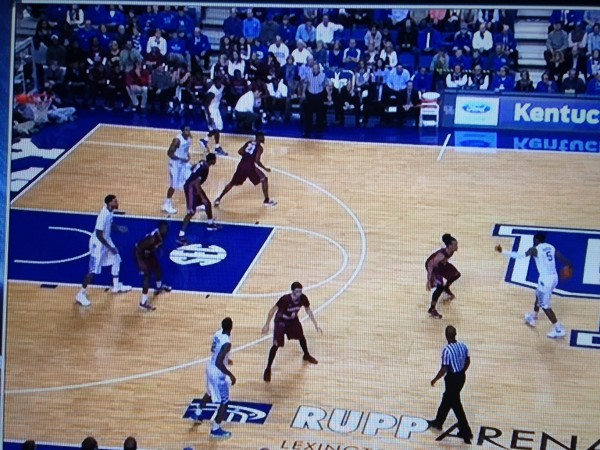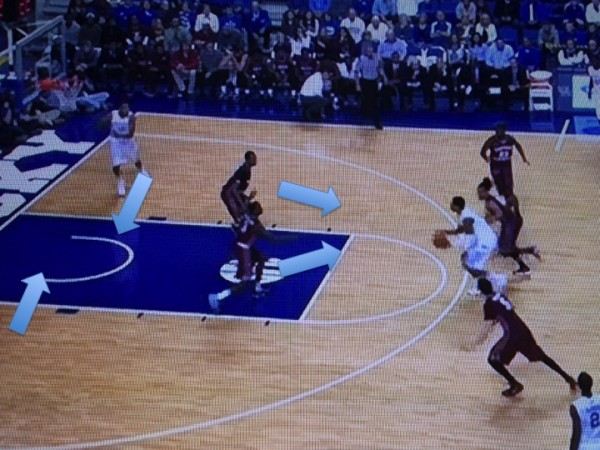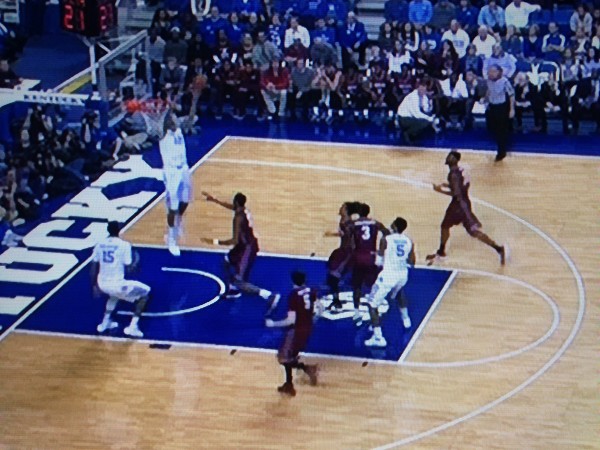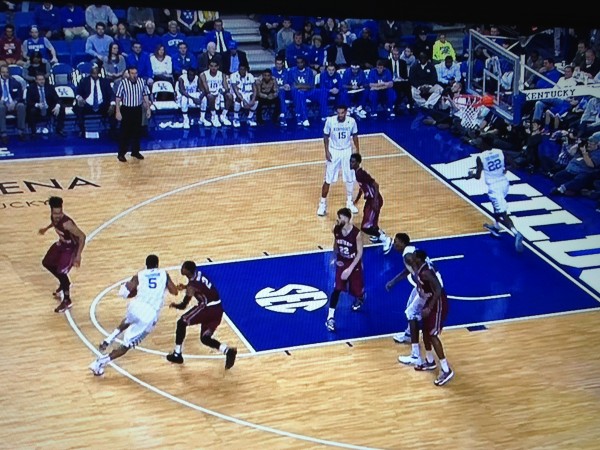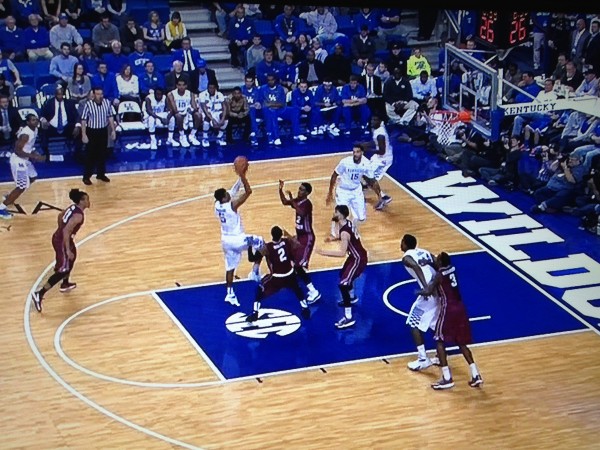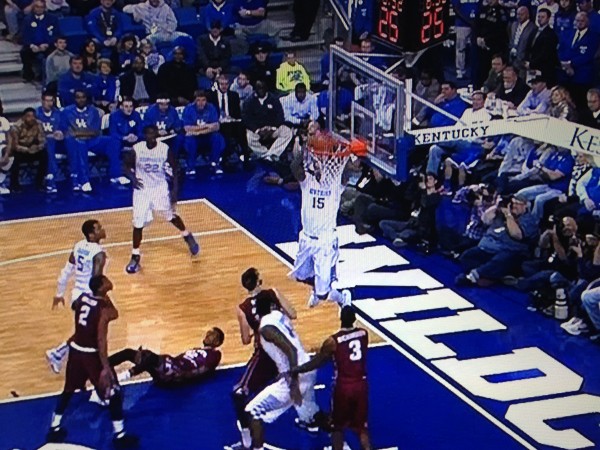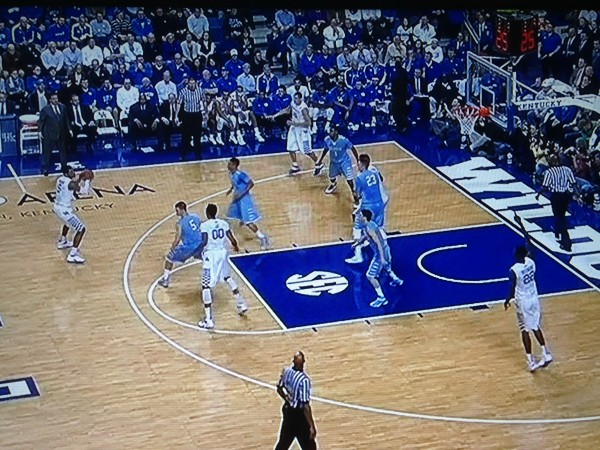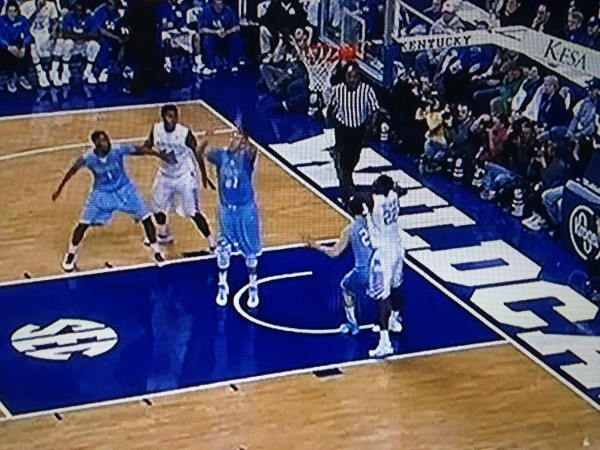Freeze Frame: Kentucky’s Alley-Oop Play
Posted by Brian Joyce on December 12th, 2014Up until Wednesday night against Ivy League opponent Columbia, only Texas and Buffalo had stayed within 20 points of the No. 1 team in the country. While the Wildcats still beat the Lions by double figures, they looked somewhat beatable for much of the game as Columbia slowed things down to 51 possessions. Columbia maintained good spacing on the offensive end of the court, forced Kentucky to shoot primarily from the outside (17 of 60 shots), and cut off the Wildcats’ go-to offensive move, the alley-oop.
Kentucky typically uses its athleticism and length to get easy looks at the basket. Against Eastern Kentucky last Sunday, the Wildcats ended up with 14 dunks and 10 lob plays in a rout at Rupp Arena. Just three days later, a well scouted game plan helped Columbia limit the Cats to just two alley-oops, both of which came in transition. In this edition of Freeze Frame, we look at how Kentucky gets so many easy lobs at the rim and how Columbia cut off that option without the same size and athleticism of all the future NBA players who reside in Lexington.
As simple as it sounds, Columbia got back on defense in order to limit the Wildcats’ fast break opportunities. Kentucky likes to get out and run, so limiting turnovers and recovering quickly after missed baskets hindered their ability to create two-on-one advantages in transition. Against EKU, Kentucky was able to take advantage of help defense in half-court offensive sets to get behind the defense for easy looks.
In the first play, you can see that Eastern Kentucky is playing a man-to-man defense. Andrew Harrison starts the offense by driving into the lane.
Harrison drives past the initial defender. With his man on his hip, help defenders need to rotate over. The problems for the Colonels are that two help defenders come, leaving offensive players Willie Cauley-Stein (out of the picture on the bottom left) and Karl-Anthony Towns open (near the basket at the top of the screen).
Harrison has his choice as both players streak to the basket. He chooses Towns on the right for the lob, and it’s as easy as that.
Later in the game, Harrison drives again against a man-to-man defense. You can see Alex Poythress cut through on the baseline without anybody picking him up.
The defender stays with Harrison, but two other defenders again help out to cut off the drive.
Poythress is open for a mid-range jumper, but the better option is Cauley-Stein receiving the lob. The result of stepping out and helping on the drive is the big man hanging from the rim.
Columbia scouted Kentucky’s demonstrative win over their neighbors down the road and saw that the Wildcats did not back screen nor use designed plays to free up players for the lob other than to drive the lane and capitalize on help defense. The Lions played a 2-3 zone as a result, staying back in the zone to take away the alley-oop. A good example can be seen in this next play. Harrison has the ball at the top of the lane and Poythress (lower right) sees a path to the basket. You can see that he’s calling for the lob from Harrison.
Without the penetration in the lane and the drift up from defenders, Columbia sniffs it out. The smaller defender simply backs into Poythress instead of trying to jump with him (which surely wouldn’t end well). The result is a failed alley-oop attempt for the Wildcats.
With a big showdown against North Carolina tomorrow looming for the undefeated Wildcats, watch for the Tar Heels to attempt to cut down on the number of easy baskets Kentucky gets via the lob. The method: Get back on defense to eliminate runouts; slow down the game; and give up the drive without help defense from other defenders. It’s much easier said than done, but taking away easy baskets by eliminating Kentucky’s alley-oop off the dribble might be part of a larger blueprint for keeping the game within reach against the very talented Wildcats.





























